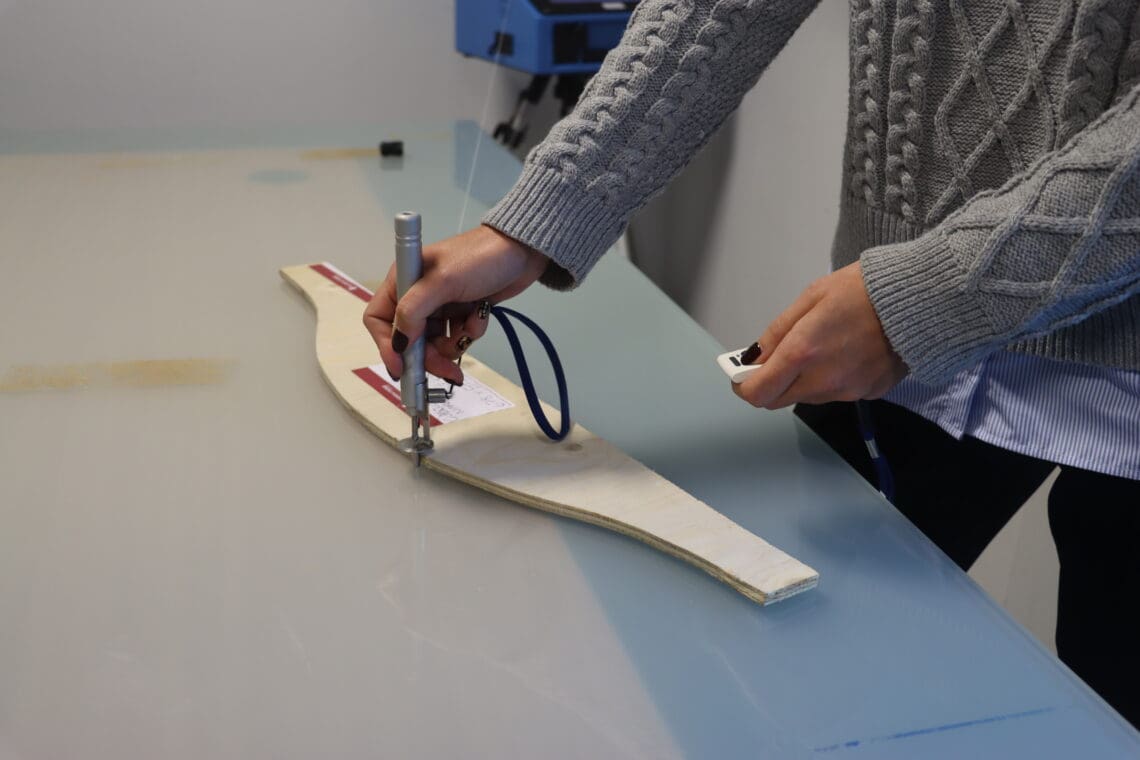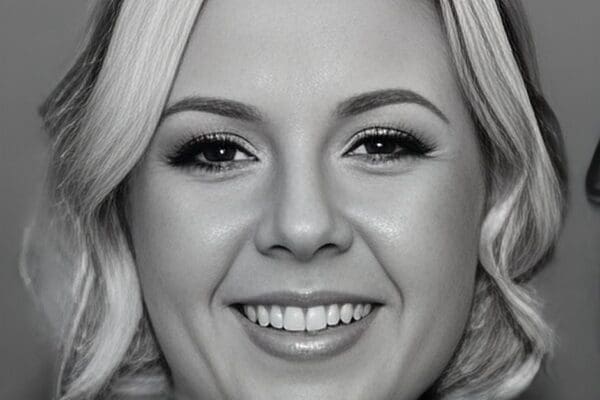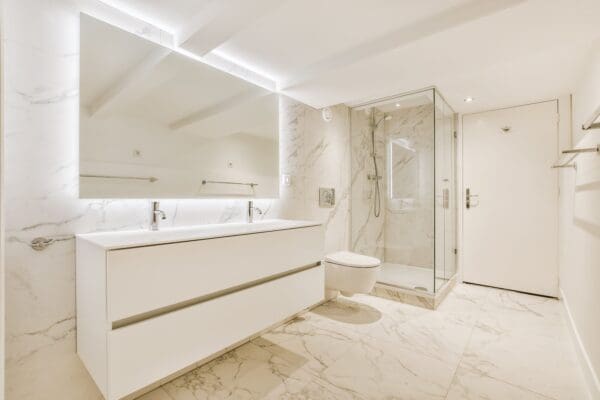More and more KBB companies are being asked to digitally draw up their templates to give to their glass suppliers in DXF files. Not only is this a time-consuming job for fitters, but it also requires a software and skill investment that is often not viable.
Glassolutions is bucking this trend through investment in their own state-of-the-art digitiser, which takes customers’ hardwood templates and does the hard work for them.
“The challenge that many of our customers come up against is the need to submit their designs for processing in a DXF file format,” explains Glassolutions Processing Co-Ordinator Ellie-May Dawson. “We found many companies don’t have the technology themselves to accurately translate their templates from wood, into a finished glass product, in a time and cost-efficient way.”
To combat this, Glassolutions invested in a Proliner digitiser, which allows them to take a hardwood template from their customers and digitise it, transferring it straight onto their Bottero CNC for cutting and processing, without the need for manual measuring or drawing: eliminating any potential human error.
What’s more, the new digitiser also makes quick work of what was previously a lengthy manual measuring process, which has resulted in Glassolutions not only having industry-leading quality of their processed glass, but also lead times too.
The Proliner works off a simple tracing method: an electronic pen is used to trace around the outline of the template, which then creates a technical image of the design. At this point, a PDF can be downloaded displaying the shape and sizes, which can be sent to the customer as a confirmation and is also provided to the processing team as a means of quality control. A DXF file is then exported and sent directly to the CNC machine for processing.
“This has simplified the process for us massively. In the early stages of our processing work, we were digitising our templates using a photographic method which involved us importing an image into a design programme to be digitised manually,” says Ellie-May.
“With this method, the process is much more streamlined allowing us to produce the glass far quicker for our customers, without compromising on its quality and accuracy.”
Investment in Equipment and Experience
Once digitised, the DXF is digitally transferred to the half-a-million-pound processing facility on the shop floor.
A brand new Bottero CNC was invested in, capable of cutting both float and laminate glass to shape, edge working the glass, routing any internal cut-outs, and drilling holes, in one swift process. The CNC can process glass as small as 200mm x 200mm, to as large as 3m x 2.2m, allowing both large commercial projects such as balustrading and retail mirrors, as well as smaller, bespoke products such as shelves and glass doors, to be produced on the same piece of machinery.
The team of people behind the processing was also a key investment for Glassolutions.
“I came from a design background, working with KBB renovations – some of which inevitably used glass as a staple material,” says Ellie-May. “So, I entered this processing role with knowledge of the glass-side of the business, but also with knowledge of the end-application; this enables me to really support our customers with advice and knowledge about the type of glass and design that their project requires.”
Alongside Ellie-May who supports customers in an office-based role, a Processing Team Leader was brought on board to manage the Processing Operatives and oversee the quality of the goods produced. With over 15-years’ experience in processing glass using CNCs, he was able to bring a wealth of knowledge and support to the team and solidify the new processes.
“As a team, we really help one another: we each have our own experience that we bring to the table, but whether it be a technical query or aesthetic advice, together we are able to really work in partnership with our customers to deliver them the best possible end product,” explains Ellie.
One Site, A Nation of Clients
Glassolutions’ processing facility is situated within its Northern Hub site in West Yorkshire. However, through its extensive network of transport routes, and its interconnected UK branches, the glass processed at the Yorkshire site is able to be delivered to customers across the nation.
“Our branches don’t work in silo,” says Ellie-May. “They all have an open route of transport and communication, which means that glass can be moved freely between sites to meet the demands of all of our customers, regardless of their location.
“For example, if a customer in the Highlands of Scotland approached our Aberdeen branch wanting a shaped and toughened glass balustrade, this could be processed at the Northern Hub and transported to our Aberdeen site on our routine delivery to Scotland. The customer could have their glass in as little as 7 working-days from order, despite it having travelled over 350 miles.”
“It is a really exciting time for us,” says Ellie-May. “We’re supplying some very high-profile retail fit-outs and commercial renovations, as well as servicing our walk-in and regular customers. The key thing is, that no matter if you order one piece of glass with us, or one hundred, we will apply the exact same care and attention to your order. That’s what Glassolutions is all about.”



